Laminitis
in Ponies and Horses
An Introduction
This condition is very painful and distressing for the pony (or more rarely, the horse). Aetiology appears to vary, from pony to pony but it is generally agreed that most cases arise from intake of rich and rapidly-growing lowland grass. Native ponies have developed to cope with much harsher conditions and rougher grazing, making lowland conditions potentially dangerous. Fertilising ground with artificial nitrogen can also provoke severe attacks, in all types of horses and ponies and can make the grass dangerous for the entire season.
 Image shows a somewhat rotund native pony on ‘stressed' grass*. This is a potential laminitis risk.
Image shows a somewhat rotund native pony on ‘stressed' grass*. This is a potential laminitis risk.
Affected animals often suffer pain (variable but sometimes very severe) during the disease and the threat of confinement in buildings, away from grass and friends, through the summer months.
In many severe cases, the outlook usually offered is extremely gloomy and there is often pressure from the veterinary team and yard personnel to end the animal's life. At the AVMC, we believe that results of previous difficult and severe cases warrant giving more of a chance to natural medicine treatments.
In natural medicine, we have been privileged to have treated a great many laminitis patients, over the years. In the majority of these, symptoms and signs appear either to have been well-controlled or even abolished. Allowance of grazing times can be extended in a controlled manner, in successful cases*.
We seek, in each case, to find an alternative to drug intervention. Treatment options used, often combined, have been veterinary acupuncture, veterinary homeopathy, LASER, chiropractic, herbal medicine and natural feeding. Grazing management is crucial*. There has also been a great deal of emphasis put on foot trimming and foot care, both during the disease and afterwards.
*If a pony is kept perpetually on short grass, the grass will be ‘stressed' and be high in potentially-damaging non-structural carbohydrates (NSC). Longer, more mature grass is less hazardous, as long as it has not been dressed with artificial nitrogen fertiliser. So-called ‘poor' moorland grazing, of the type shown in the second picture of the pair, is rarely a risk to native ponies. Frosted grass may also represent a hazard.
N.B.: Steroid-induced laminitis: Severe and sometimes intractable laminitis can be accidentally induced as a side effect of injection with steroid (corticosteroid, cortisone), an example of iatrogenic disease. This very distressing and sometimes fatal condition is entirely avoidable but regrettably cases still occur, despite our knowledge of it extending back at least to 1980. Holistic treatment for this is best started from the outset. We often see cases that are months down the line and much less likely to be saved.
N.B.: If your horse has suffered this reaction, the Veterinary Medicines Directorate runs the SARSS Scheme, designed to receive and collate reports of suspected adverse events from medication. Please download a form and submit it, if you suspect an adverse reaction in your horse.
For a fuller account of this topic, see:
